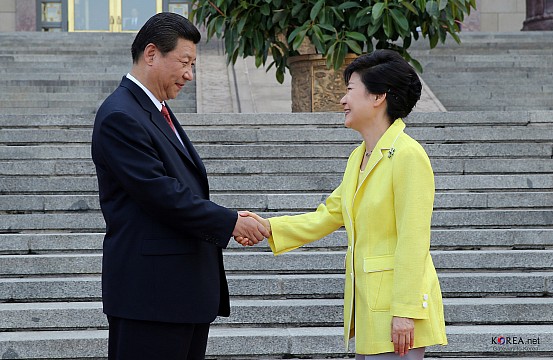 If the 21st century ultimately fulfills its predicted destiny as the “Pacific Century,” future historians will mark 2013 as the watershed year in which the gravity of world power began to tilt toward the Asia-Pacific, and perhaps 2017 as the decisive year of the shift. In 2013, two major economic strategies to strengthen regional cohesion and global connectivity were announced: China’s massive “One Belt, One Road” (OBOR) and South Korea’s “Eurasia Initiative” (EAI). While the former has clearly overshadowed the latter, the relatively tiny South Korea’s aspirations may ultimately hold the key to the success or failure of China’s grand vision because of the pivotal role North Korea plays in the destiny of both countries.
If the 21st century ultimately fulfills its predicted destiny as the “Pacific Century,” future historians will mark 2013 as the watershed year in which the gravity of world power began to tilt toward the Asia-Pacific, and perhaps 2017 as the decisive year of the shift. In 2013, two major economic strategies to strengthen regional cohesion and global connectivity were announced: China’s massive “One Belt, One Road” (OBOR) and South Korea’s “Eurasia Initiative” (EAI). While the former has clearly overshadowed the latter, the relatively tiny South Korea’s aspirations may ultimately hold the key to the success or failure of China’s grand vision because of the pivotal role North Korea plays in the destiny of both countries.
The genesis of both OBOR and the EAI is geography, from which the region’s strategic impetuses flow. As the Western world’s attention has increasingly tilted eastward, manifested in part by the U. S. “Pivot to Asia,” China, in contrast, has turned westward, as well as to its north and south. Not to be outdone, other regional powers have also readjusted their strategic compasses: Russia’s attention is increasingly turning south and east through its “Eastern Dream”; India is turning north and east through its “Act East” strategy; and Japan is turning to its west and south with its “Free and Open Indo-Pacific Strategy.”
These geographic readjustments of strategic priorities are in great part a reaction to the U. S.-centric regional architecture based on the “hub-and-spoke” alliance system that has dominated the region since World War II. OBOR is China’s attempt to build an alternative regional architecture to support its own geopolitical objectives, first and foremost challenging U. S. leadership in the region and ultimately globally. OBOR also serves China’s nearer-term priority of reinforcing its own domestic stability by promoting security in extra-territorial regional neighbors through its economic and political influence.
Through massive investments in infrastructure development projects in geographically strategic countries such as Pakistan, Bangladesh, Myanmar, Cambodia, and countries throughout Central Asia, China offers tempting alternatives to U. S. and Western influence with their more stringent standards and requirements.
Meanwhile, South Korea, whose very existence and security remains firmly entrenched in the U.






